Jack Craig’s molten-made Pressed Table
Double Take
-
Designer Jack Craig at work on the PVC series
Image © Michelle and Chris Gerard for L'AB/Pamono
-
Image © Michelle and Chris Gerard for L'AB/Pamono
-
Image © Michelle and Chris Gerard for L'AB/Pamono
-
Image © Michelle and Chris Gerard for L'AB/Pamono
-
Image © Michelle and Chris Gerard for L'AB/Pamono
-
Image © Michelle and Chris Gerard for L'AB/Pamono
-
Image © Michelle and Chris Gerard for L'AB/Pamono
-
Image © Michelle and Chris Gerard for L'AB/Pamono
-
Image © Michelle and Chris Gerard for L'AB/Pamono
-
Image © Michelle and Chris Gerard for L'AB/Pamono
-
Image © Michelle and Chris Gerard for L'AB/Pamono
-
Image © Michelle and Chris Gerard for L'AB/Pamono
-
Image © Michelle and Chris Gerard for L'AB/Pamono
-
PVC Series: Pressed, 20113
Image courtesy of the designer & Johnson Trading Gallery
-
PVC Series: Pressed, 20113
Image courtesy of the designer & Johnson Trading Gallery
-
PVC Series: Pressed, 20113
Image courtesy of the designer & Johnson Trading Gallery
At first glance, Jack Craig’s Pressed Table appears almost otherworldly. It is a charming but curious combination of stone fragments encased in a futuristic, turquoise shell. Sleek and even a bit archeological on top, at its bottom, seemingly haphazard curves jut out from its core, giving the impression that something or someone is trying to get out.
Dig a little deeper, though, and one realizes that this ambiguous outer layer is, in fact, repurposed PVC water main piping. And Pressed is the latest addition to Craig’s ongoing PVC Series—an experimentally driven collection that has allowed the Detroit-based designer to push the material to its physical limits. Embracing readily available resources, PVC combines craft, design, and industry to play with observers’ preconceived notions of common objects. As Craig says, “The ordinary can be activated, amplifying everyday experiences.”
“I like setting up experiments where the results are indeterminate,” he notes. He has spent the past year doing just that, heating and manipulating PVC by hand—stretching, folding, and pressing to test its boundaries. Once the plastic is molten, he inserts contrasting, natural materials: Previously, these included locally sourced wood and steel; most recently, with Pressed, he incorporates stone fragments salvaged from granite and marble countertop fabrication shops around the city.
“I learn by experimenting,” he says. “I do dozens of material studies and models, all based on simple, one-man, low-tech techniques and how they can transform.”
Depending on size, each Pressed Table takes anywhere from a few days to a few weeks to complete. To begin, Craig—a former engineer for the U.S. Navy’s infrared division and a 2012 graduate of Michigan’s Cranbrook Academy of Art—procures a 20-foot-long, 2-foot diameter, 600-pound PVC tube from a local industrial plumbing distributor called Etna Supply. (Surprisingly, these pressure-resistant tubes come in white and pastels, each hue signifying a different industrial purpose.) Craig cuts the pipe down to size—a ballpark 22 inches long per table—with a handsaw in the parking lot outside his studio.
“Few get to see that much plastic at once,” the designer acknowledges. “Confronted with these volumes, there is a kind of reduction. You experience them for their sheer materiality. It is completely foreign, but the strangeness sets up opportunity.”
Once the PVC is cut, Craig heats up the individual pieces, holding a propane space heater in one arm and rotating the pipe in the other, until the PVC reaches a malleable, molten effect. “I look like some sort of World War II-era flame-thrower soldier,” he laughs.
Each cut piece of plastic weighs between 30 and 50 pounds on its own. “That’s part of my fascination with them,” he says. “Ultimately, they are plastic, and the tendency is to think of that as a cheap material. But at this size and weight, it plays with your ideas of value.”
When the piping is heated and pliable, Craig has a five-minute window in which to act, before the plastic cools. He uses a quick, simple gesture to place the stone fragments inside. When the PVC loses heat, it condenses around the inner material, defining the table’s ultimate form—a process Craig refers to as “fossilizing.”
With Pressed, this particular step has developed even further. As he explains, “Instead of a single applied force, the latest forms are derived from a series of applied pressures. The plastic is stretched and compressed in multiple directions; its fluid limits are pushed to the upper extreme. Repetitive heating and cooling and pressure coax the plastic to envelope inserted materials to take on its irregularities.”
After the plastic and stone have unified, each table undergoes an intensive sanding and polishing process, using techniques Craig picked up working with local suppliers and experts.
He enjoys that part of the learning process as well: “This series connects me to different people and industries and gives me access to a whole community of experts and fabricators. The great thing about Detroit—and it’s helped my practice evolve, too—is that there are still all these fabricators and residual components of industry that are alive and well. Everything’s at my fingertips.”
And for someone so devoted to experimentation, that access is invaluable. Because for Craig, every new piece is a chance to push the limits just a bit more, and to add another dose of unexpected wonder into the everyday.
-
Text by
-
Anna Carnick
Als ehemalige Redakteurin bei Assouline, der Aperture Foundation, Graphis und Clear feiert Anna die großen Künstler. Ihre Artikel erschienen in mehreren angesehenen Kunst- und Kulturpublikationen und sie hat mehr als 20 Bücher herausgegeben. Sie ist die Autorin von Design Voices und Nendo: 10/10 und hat eine Leidenschaft für ein gutes Picknick.
-
-
Photos by
-
Michelle & Chris Gerard
Michelle & Chris are documentary photographers with a strong passion for their city of Detroit.
-
Designbegeisterte hier entlang
Metal Rock SH2 Hocker von Michael Young für Veerle Verbakel Gallery, 2016

Goldener Metal Rock S4 Beistelltisch von Michael Young für Veerle Verbakel Gallery, 2016
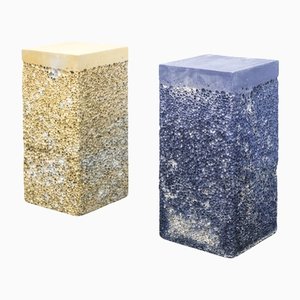
Metal Rock R3 in Blau oder Gold von Michael Young für Veerle Verbakel Gallery, 2016

Metal Rock MT Blue oder Gold von Michael Young für Veerle Verbakel Gallery, 2016

Metal Rock SH3 Hocker von Michael Young für Veerle Verbakel Gallery, 2016
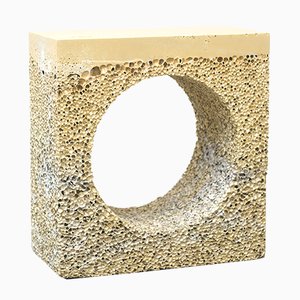
Große Tiefe Schale aus Schwarzem Basalt aus der Crockery Serie von Max Lamb für 1882 Ltd

Truecolors Anrichte von Visser & Meijwaard
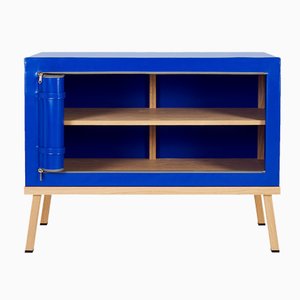
Truecolors Schrank von Visser & Meijwaard

Truecolors Hocker von Visser & Meijwaard

Truecolors Bank von Visser & Meijwaard
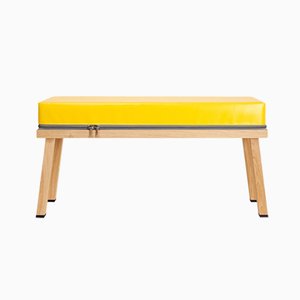
Truecolors Nachtschrank von Visser & Meijwaard
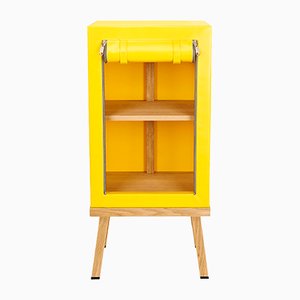

















 Jack Craig at work on the PVC series
Photo © Michelle and Chris Gerard for L'AB/Pamono
Jack Craig at work on the PVC series
Photo © Michelle and Chris Gerard for L'AB/Pamono

